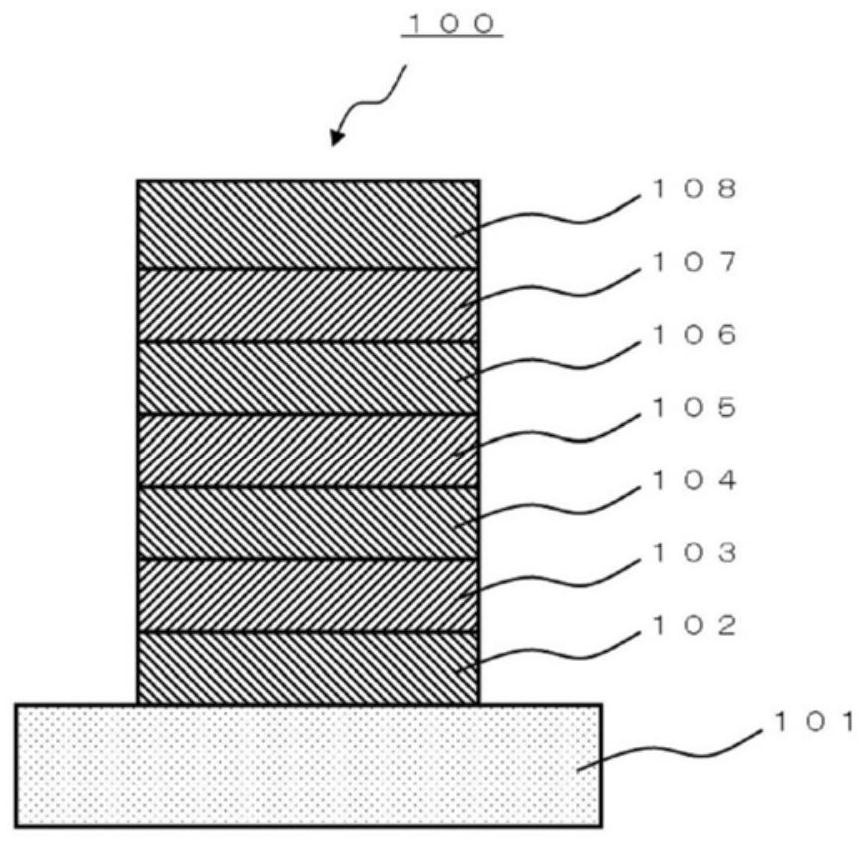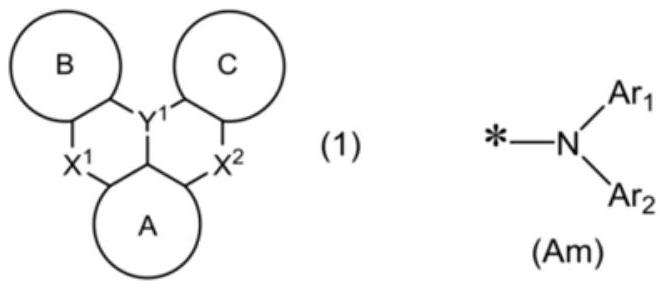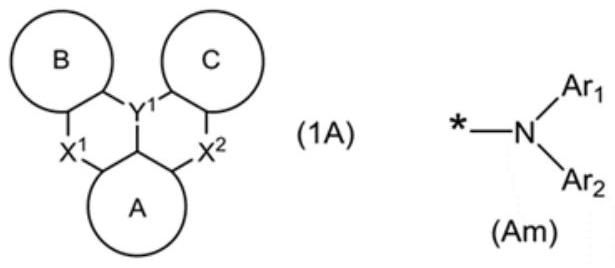Polycyclic aromatic compound, reactive compound, polymer compound, suspension-type polymer compound, and use using same
A polycyclic aromatic compound technology, applied in the field of suspended polymer compounds, can solve problems such as insufficient life, unsuitable main materials, and insufficient stability of aromatic epoxy redox
- Summary
- Abstract
- Description
- Claims
- Application Information
AI Technical Summary
Problems solved by technology
Method used
Image
Examples
Embodiment
[1755] Hereinafter, although an Example demonstrates this invention more concretely, this invention is not limited to the said Example. First, a synthesis example of a polycyclic aromatic compound will be described below.
Synthetic example (A1
[1756] Synthesis Example (A1): Synthesis of Compound (1-30)
[1757] [Chemical 437]
[1758]
[1759] Under nitrogen atmosphere, intermediate (I-A) (16.0 g), intermediate (I-B) (12.8 g), dichlorobis[(di-tert-butyl(4-dimethylaminophenyl) phosphino)palladium] (Pd-132, 0.29 g), sodium tert-butoxide (NaOtBu, 5.9 g) and xylene (100 ml) were placed in a flask, and heated at 120° C. for 1 hour. After the reaction, water and ethyl acetate were added to the reaction liquid and stirred, and then the organic layer was separated and washed with water. Then, the organic layer was concentrated to obtain a crude product. The crude product was purified with a silica gel short column (eluent: toluene / heptane=1 / 4 (volume ratio)) to obtain Intermediate (I-C) (22.6 g).
[1760] [Chemical 438]
[1761]
[1762] To a flask containing Intermediate (I-C) (20.0 g) and tert-butylbenzene (90 ml) was added a 1.56M solution of tert-butyllithium in pentane (36.2 ml) at 0°C under nitrogen. After ...
Synthetic example (B1
[1767] Synthesis Example (B1): Synthesis of Compound (1-3001)
[1768] [Chemical 440]
[1769]
[1770] Under a nitrogen atmosphere, 3-bromo-N,N-diphenylaniline (35 g), 4-tert-butylaniline (19.3 g), dichlorobis[(di-tert-butyl (4-tert-butyl) as a palladium catalyst were combined Dimethylaminophenyl)phosphino)]palladium (Pd-132, 76 mg), sodium tert-butoxide (NaOtBu, 15.6 g) and xylene (200 ml) were put into a flask, and heated at 120° C. for 2 hours. After completion of the reaction, water and ethyl acetate were added to the reaction liquid and stirred, and then the organic layer was separated and washed with water. Then, the crude product obtained by concentrating the organic layer was purified with a silica gel short column (eluent: toluene / heptane=1 / 1 (volume ratio)) to obtain an intermediate (I-1) 40g.
[1771] [Chemical 441]
[1772]
[1773] Under a nitrogen atmosphere, intermediate (I-1) (10.0 g), intermediate (I-2) (12.3 g), Pd-132 (0.2 g) as a palladium cataly...
PUM
 Login to View More
Login to View More Abstract
Description
Claims
Application Information
 Login to View More
Login to View More - Generate Ideas
- Intellectual Property
- Life Sciences
- Materials
- Tech Scout
- Unparalleled Data Quality
- Higher Quality Content
- 60% Fewer Hallucinations
Browse by: Latest US Patents, China's latest patents, Technical Efficacy Thesaurus, Application Domain, Technology Topic, Popular Technical Reports.
© 2025 PatSnap. All rights reserved.Legal|Privacy policy|Modern Slavery Act Transparency Statement|Sitemap|About US| Contact US: help@patsnap.com



